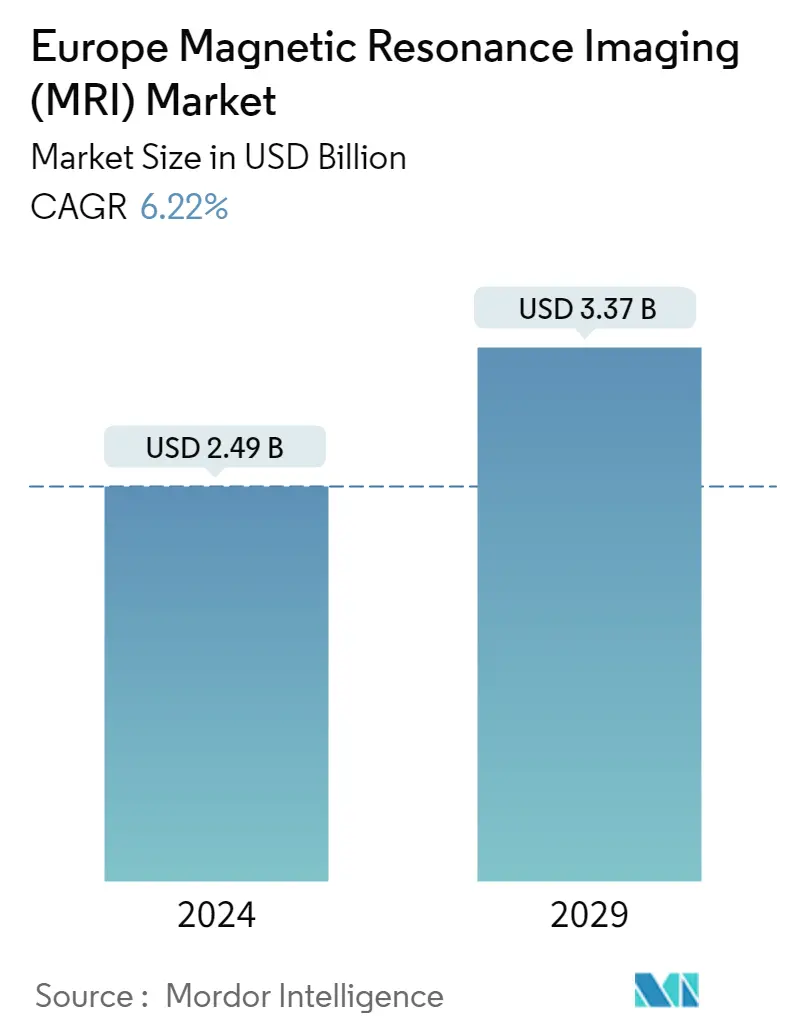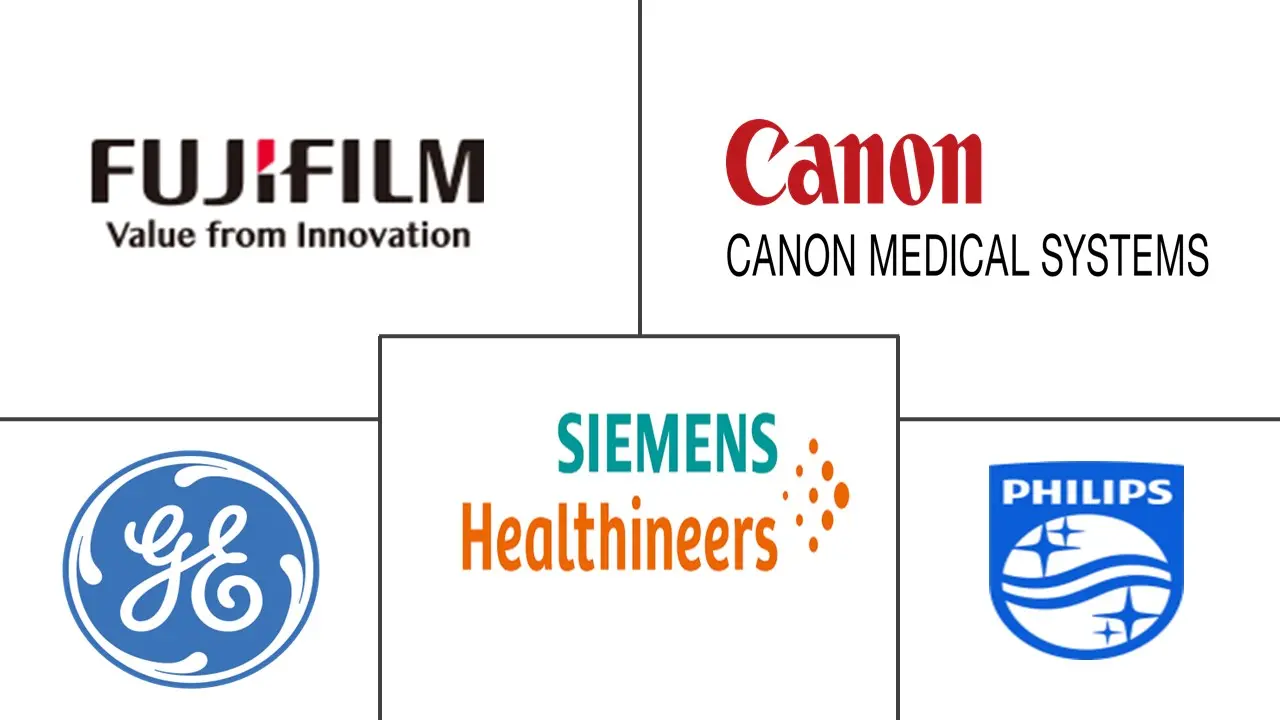Market Size of Europe Magnetic Resonance Imaging (MRI) Industry

| Study Period | 2019 - 2029 |
| Base Year For Estimation | 2023 |
| Market Size (2024) | USD 2.49 Billion |
| Market Size (2029) | USD 3.37 Billion |
| CAGR (2024 - 2029) | 6.22 % |
| Market Concentration | Low |
Major Players
*Disclaimer: Major Players sorted in no particular order |
Need a report that reflects how COVID-19 has impacted this market and its growth?
Europe Magnetic Resonance Imaging (MRI) Market Analysis
The Europe Magnetic Resonance Imaging Market size is estimated at USD 2.49 billion in 2024, and is expected to reach USD 3.37 billion by 2029, growing at a CAGR of 6.22% during the forecast period (2024-2029).
The impact of COVID-19 on the routine diagnostics services industry has been prominent. Governments of various countries have posed restrictions on the usage of MRI, as there are high chances of contamination with the usage of large equipment. According to the study titled "Impact of COVID-19 on the imaging diagnosis of cardiac disease in Europe" published in the British Medical Journal in August 2021, comparing Northern and Southern European centers to Western and Eastern European, the likelihood of canceling all outpatient activities was higher in 2020. Compared to the rest of the globe, Europe saw a higher decrease in the number of imaging procedures. Therefore, the market expansion was constrained by a decline in imaging volume during COVID-19 in Europe.
The major factors attributing to the growth of the Europe Magnetic Resonance Imaging market are the introduction of hybrid MRI systems, availability of universal health coverage in Europe, and increasing emphasis on early diagnosis. The presence of universal healthcare coverage reduces the cost of various procedures including MRI which encourages people to take tests or treatment at regular interval which is one of the most significant growth factors for the MRI market. Universal health coverage (UHC) was endorsed in 2012 by the United Nations, which is a pillar of sustainable development and global security. Most of the European countries, provide universal health coverage and the cost of MRI scanning is reimbursed either in part or in full depending on the country. Some of the established insurance providers in Europe are National Association of Statutory Health Insurance Physicians and the Association of Private Health Insurance in Germany, Hungarian National Health Insurance Fund in Hungary, National House of Health Insurance in Romania, Health Insurance Institute of Slovenia, and KELA in Finland, among others. All these organizations provide insurance for MRI.
The usage of MRI is steadily growing, for instance, personalized care is evolving as an integral part of medicine where molecular imaging is increasing its contribution significantly through the use of non-invasive processes for accurate diagnosis and determination of diseases. As per Eurostats Statistics in February 2022, more than one fifth (20.8 %) of Europe citizens were 65 years of age or older in 2021. Between 2021 and 2100, there will be a projected 2.5-fold increase in the proportion of individuals in the Europe who are 80 years or older, from 6.0 to 14.6%. As the number of the elderly population is expected to increase in near future who are more prone to chronic conditions such as neurological diseases, and other disorders which increases diagnostic procedures and ultimately drives the market over the forecast period.
The presence of key market players, as well as other research-intensive and innovative companies in the country with huge funding for research and development activities that are involved in enhancing the MRI technology, are also expected to contribute significantly to the growth of the MRI market in Germany with the launch of advanced and cost-effective systems. For instance, in May 2021, Grosshansdorf, a Germany-based NeoscanSolution, released a small, light MRI scanner designed to keep journeys short and to scan sick babies in their sleep. This new MRI system uses digitizers and arbitrary waveform generators (AWGs) to generate scanner signals and generate results. Similarly, in October 2021, one of the most powerful MRI system of MAGNETOM 11.7T MRI system by Siemens Healthineerswas installed at NeuroSpin at CEA-Paris-Saclaybased at Frédéric Joliot Institute for Life Sciences, France.
Thus, all above mentioned factors are expected to boost the market growth. However there are few factors which may restrain the market growth such as the high cost of MRI systems.
